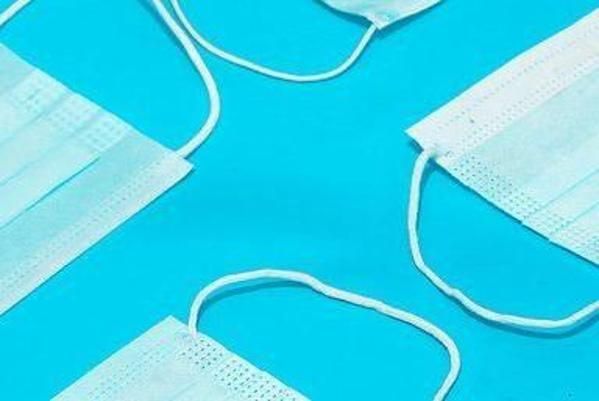FACULTAD DE CIENCIAS BIOMÉDICAS Y DE LA SALUD
Facultad


Hospital Clinico Universitario de Valencia
Valencia, EspañaPublicacións en colaboración con investigadores/as de Hospital Clinico Universitario de Valencia (193)
2024
-
3-year invasive disease-free survival with chemotherapy de-escalation using an 18F-FDG-PET-based, pathological complete response-adapted strategy in HER2-positive early breast cancer (PHERGain): a randomised, open-label, phase 2 trial
The Lancet, Vol. 403, Núm. 10437, pp. 1649-1659
-
Combinational Diuretics in Heart Failure
Current Heart Failure Reports
-
Correlation between trophoblast cell-surface antigen-2 (Trop-2) expression and pathological complete response in patients with HER2-positive early breast cancer treated with neoadjuvant docetaxel, carboplatin, trastuzumab, and pertuzumab
Breast Cancer Research and Treatment
-
Design and baseline characteristics of SALT-HF trial: hypertonic saline therapy in ambulatory heart failure
ESC Heart Failure
-
Invasive Treatment Strategy in Adults With Frailty and Non-ST-Segment Elevation Myocardial Infarction: A Secondary Analysis of a Randomized Clinical Trial
JAMA network open, Vol. 7, Núm. 3, pp. e240809
-
Optimal [18F]FDG PET/CT Cutoff for Pathologic Complete Response in HER2-Positive Early Breast Cancer Patients Treated with Neoadjuvant Trastuzumab and Pertuzumab in the PHERGain Trial
Journal of nuclear medicine : official publication, Society of Nuclear Medicine, Vol. 65, Núm. 5, pp. 708-713
-
Preventing alpelisib-related hyperglycaemia in HR+/HER2−/PIK3CA-mutated advanced breast cancer using metformin (METALLICA): a multicentre, open-label, single-arm, phase 2 trial
eClinicalMedicine, Vol. 71
-
Sex differences in clinical characteristics and outcomes in the CLOROTIC (combining loop with thiazide diuretics for decompensated heart failure) trial
Revista Clinica Espanola, Vol. 224, Núm. 2, pp. 67-76
2023
-
Clinical Outcomes of Critical COVID-19 in HIV-Infected Adults: A Propensity Score Matched Analysis
Archivos de Bronconeumologia, Vol. 59, Núm. 11, pp. 772-778
-
Clinical Profile and Determinants of Mortality in Patients with Interstitial Lung Disease Admitted for COVID-19
Journal of Clinical Medicine, Vol. 12, Núm. 11
-
Effect of Routine Invasive vs Conservative Strategy in Older Adults With Frailty and Non-ST-Segment Elevation Acute Myocardial Infarction: A Randomized Clinical Trial
JAMA Internal Medicine, Vol. 183, Núm. 5, pp. 407-415
-
Expert Consensus: Main Risk Factors for Poor Prognosis in COVID-19 and the Implications for Targeted Measures against SARS-CoV-2
Viruses, Vol. 15, Núm. 7
-
Extended use of dual antiplatelet therapy among older adults with acute coronary syndromes and associated variables: a cohort study
Thrombosis Journal, Vol. 21, Núm. 1
-
Hydroxychloroquine and Mortality in SARS-Cov-2 Infection; the HOPE-Covid-19 Registry
Anti-Infective Agents, Vol. 21, Núm. 2, pp. 66-78
-
Inhaler Adherence in COPD: A Crucial Step Towards the Correct Treatment
International journal of chronic obstructive pulmonary disease, Vol. 18, pp. 2887-2893
-
Mortality reduction in older COVID-19-patients hospitalized in Spain during the second pandemic wave from the SEMI-COVID-19 Registry
Scientific Reports, Vol. 13, Núm. 1
-
Non-ST Elevation Myocardial Infarction in the Elderly. Antithrombotic Therapy and Beyond
Reviews in Cardiovascular Medicine, Vol. 24, Núm. 7
-
One-year breakthrough SARS-CoV-2 infection and correlates of protection in fully vaccinated hematological patients
Blood Cancer Journal, Vol. 13, Núm. 1
-
Outcomes of lung and liver transplantation after simultaneous recovery using abdominal normothermic regional perfusion in donors after the circulatory determination of death versus donors after brain death
American Journal of Transplantation, Vol. 23, Núm. 7, pp. 996-1008
-
Palbociclib Rechallenge for Hormone Receptor-Positive/HER-Negative Advanced Breast Cancer: Findings from the Phase II BioPER Trial
Clinical cancer research : an official journal of the American Association for Cancer Research, Vol. 29, Núm. 1, pp. 67-80